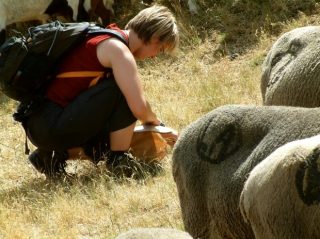CCG10-UAM/AMB-5278.
DGUI (Madrid Region)-UAM 2011-2011.
The Iberian Peninsula has one of Europe’s largest networks of drove roads. The continued use of these routes by livestock over many centuries has undoubtedly played a major ecological role at different spatial scales, although they have received relatively little scientific attention. The traditional use of these drove roads has declined in recent decades, making it all the more urgent to document the ecological effects of the drove roads that are still in use.
 This project had three main objectives. The first was to test the effects of drove roads as large-scale ecological corridors. Our core hypothesis was that these effects continue over a long time, and should be visible in the form of genetic footprints in plant populations, even in situations of low-intensity transhumance. Secondly, the project documented some of the effects at the local scale, particularly those deriving from increased spatial heterogeneity due to the presence of drove roads in homogeneous and/or highly transformed environments (e.g., agricultural or forest landscapes). For this purpose, the project focused on vegetation and ant communities. Finally, the project identified the main land-use changes undergone in recent decades by drove roads in the Madrid Region, and described the effects on vegetation communities.
This project had three main objectives. The first was to test the effects of drove roads as large-scale ecological corridors. Our core hypothesis was that these effects continue over a long time, and should be visible in the form of genetic footprints in plant populations, even in situations of low-intensity transhumance. Secondly, the project documented some of the effects at the local scale, particularly those deriving from increased spatial heterogeneity due to the presence of drove roads in homogeneous and/or highly transformed environments (e.g., agricultural or forest landscapes). For this purpose, the project focused on vegetation and ant communities. Finally, the project identified the main land-use changes undergone in recent decades by drove roads in the Madrid Region, and described the effects on vegetation communities.

